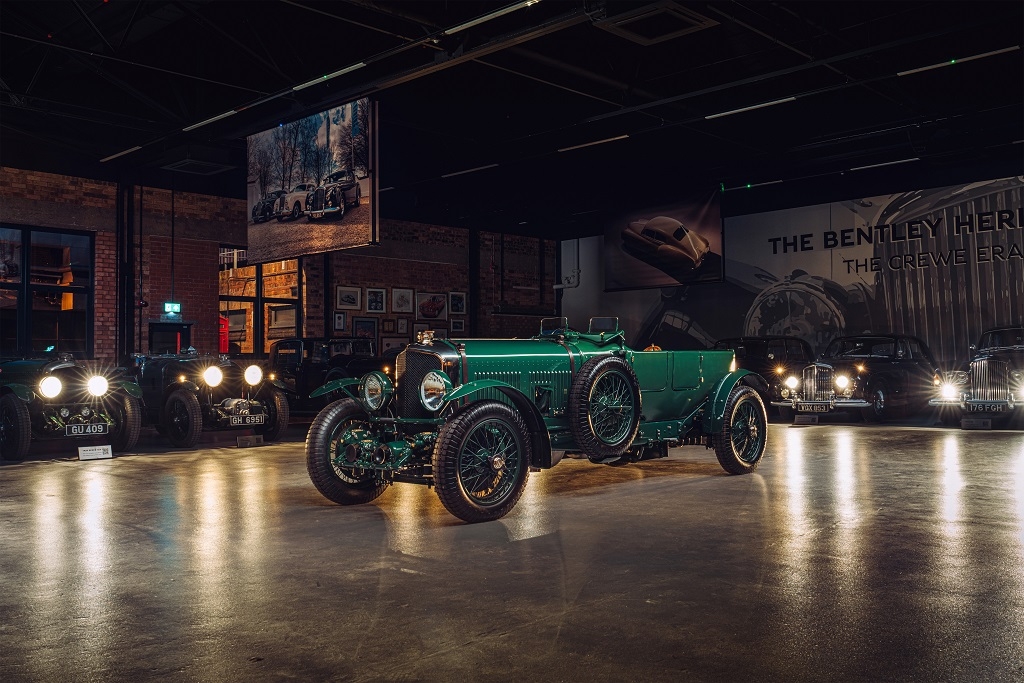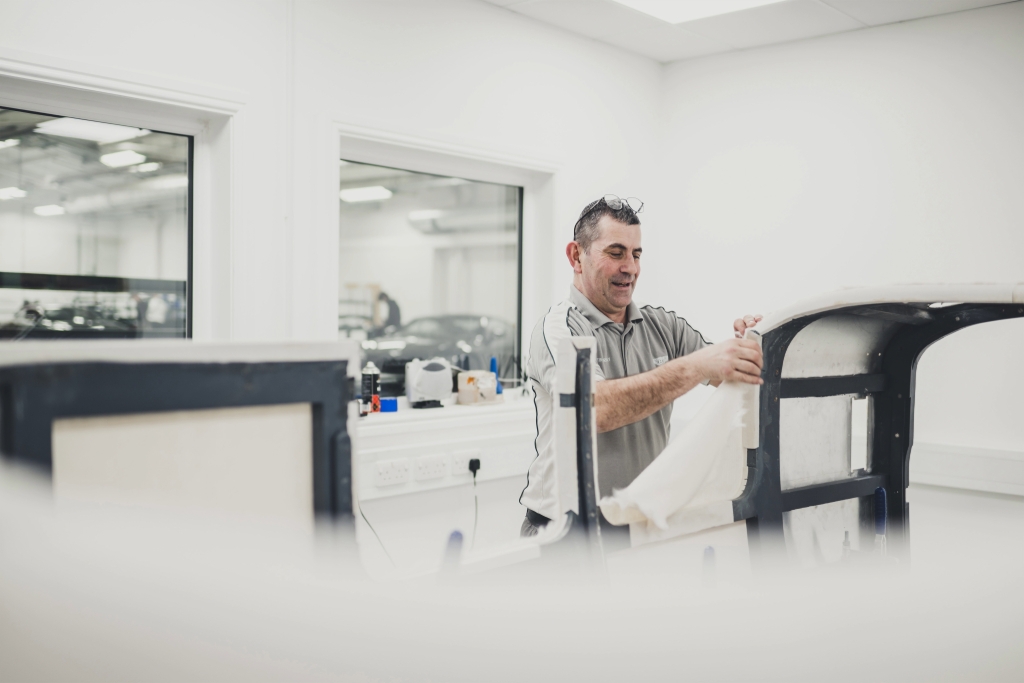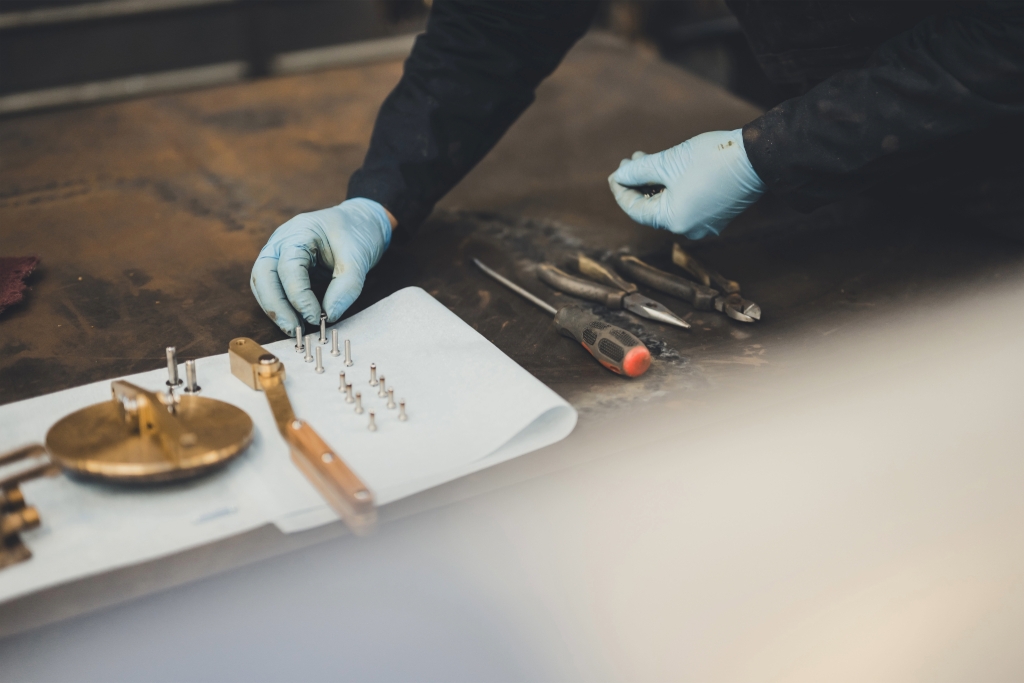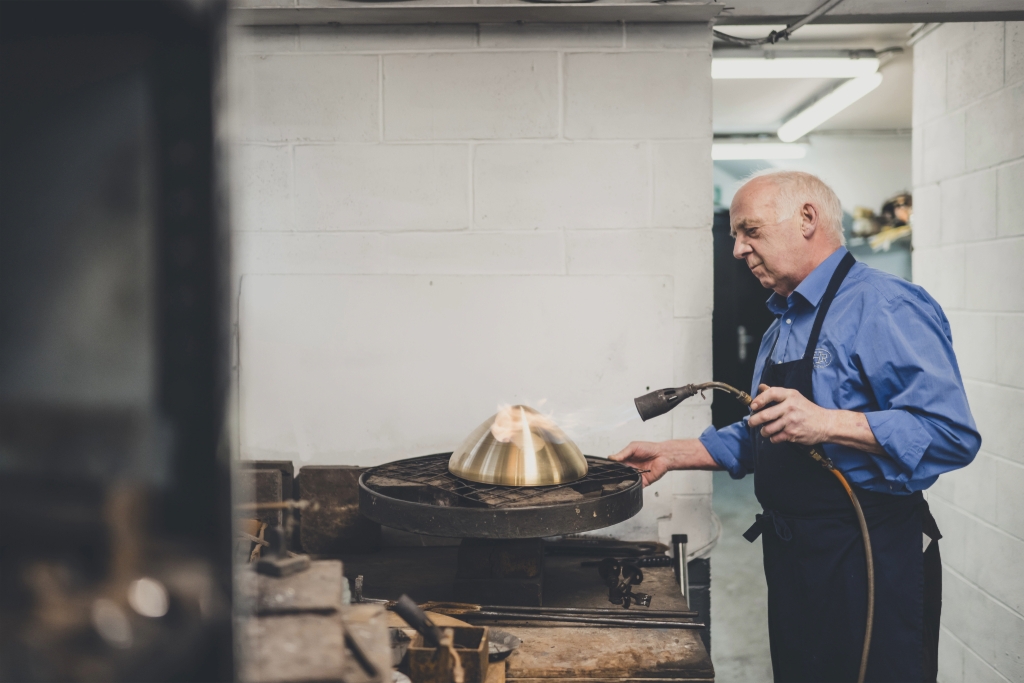Bentley is now building its first Speed Six in 93 years
23 Mar 2024|167 views
For the first time in 93 years, the Bentley Speed Six is taking shape in the workshops of Mulliner.
Introduced in 1928, the Speed Six acted as a more sporting version of the Bentley 6.5-Litre. The engine of the Speed Six was modified to liberate more power, with the installation of twin SU carburettors, a higher compression ratio and a high-performance camshaft.
Between 1928 and 1930, 182 Speed Six models were built. The Speed Six's place in Bentley's racing history was cemented with its two wins at Le Mans 24 Hour race in 1929 and 1930.
Back in 2022, Bentley announced that it would be reviving the model with a highly-limited, 12-unit production run for a selected group of lucky customers. Named the Speed Six Continuation Series, all 12 units have already been pre-sold, with the official start of production now following the successful completion 12 Bentley 4.5-Litre Supercharged 'Blower' Continuation models. Interestingly, that marked the world's first pre-war continuation series.
The Continuation Series Speed Six is now being built off a template taken off two original Speed Sixes, the first of which is Bentley's own Speed Six, the GU409.
The second, however, is the Old Number 3: A Speed Six that was driven in the 1930 Le Mans 24 Hour race by Sammy Davis and Clive Dunfee. The original car was loaned to Bentley by its owner, providing the Mulliner team with invaluable data on dimension, materials and also components.
Supporting production of the cars is W.O. Bentley Memorial Foundation, which is responsible for the original drawings and notes used by the Mulliner Classic team. An estimated 80% of the drawings and notes being have been provided by the Foundation.
This paved the way for the team to include modifications that were made by the Bentley works team to improve reliability and performance in the 1929 and 1930 Le Mans 24 Hour races into the Continuation cars.
Buyers of the 12 vehicles are able to specify their vehicles from a choice of period-correct finishes and materials. All of the vehicles are also built using period-correct materials and techniques, ensuring total fidelity to W.O. Bentley's original design. The build of each car will take 10 months from start to finish.
The first prototype of this Continuation Series, Car Zero, has been put through a series of engineering development work over the last six months. This includes 40 hours of engine testing, followed by 10,000km of durability running on a variety of surfaces.
More recently, Car Zero also completed top speed testing, in which - impressively - it achieved the same top speed as the original models: Of approximately 180km/h.
Regardless of the differences in environments between Bentley's original Cricklewood factory and the current Mulliner workshops, each Continuation Series Speed Six will be built with not just tools, but also materials and techniques that would have been familiar to W.O. Bentley and his team back in the 1920s.
To achieve the same level of authenticity, Mulliner has also called on a network of specialist British engineering and restoration experts.
In Ludlow, the ash frame for the Speed Six body is hand-crafted using traditional coachbuilding tools and techniques by Lomax Coachbuilders. When the frame is united with the chassis at the Mulliner workshops, the team there will clad it in around 25 metres of Rexinem, a highly specialised period-correct fabric. This helps create the Speed Six's Weymann-style open tourer bodywork.
At Vintage Headlamp Restoration International Ltd, a father and son team - celebrated for their ability to create vintage-design headlamps from original specifications - crafts exact recreations of the Speed Six headlamps. More than just being distinctive, these headlamps played an important role in lighting the works cars' two Le Mans wins.
Yet another collaborator is the Vintage Car Radiator Company - an expert in classic car radiators and components - which is the only company in the world which manufactures all 28 types of pre-war radiator. The company will be contributing to Speed Six's radiator core, the mirror-polished, solid nickel silver radiator shell, and the hand-beaten fuel tank in steel and copper.
The last company which will have a hand in the production is Kingsbury Racing Shop Limited. Regarded as specialists in the restoration, preparation and servicing of vintage Bentleys, the company will work closely with Tom Dark Engineering to convert the original drawings into 3D models.
Various experts across the U.K. worked within their specialties to ensure the vehicles created are as authentic as possible
After the conversion, 600 individual parts will be fabricated for the new 6.5-Litre race specification engine. In its time period, this highly-advanced engine was able to develop 200bhp. It featured four valves, two spark plugs per cylinder, and an eight-bearing crankshaft.
During initial dyno testing, results showed that the Continuation Series engines are able to develop 205bhp, with modern materials aiding in extracting more power. Despite this power bump, however, the intent of the series remains: To create a Speed Six which looks and performs exactly like the original in 1929.
For the first time in 93 years, the Bentley Speed Six is taking shape in the workshops of Mulliner.
Introduced in 1928, the Speed Six acted as a more sporting version of the Bentley 6.5-Litre. The engine of the Speed Six was modified to liberate more power, with the installation of twin SU carburettors, a higher compression ratio and a high-performance camshaft.
Between 1928 and 1930, 182 Speed Six models were built. The Speed Six's place in Bentley's racing history was cemented with its two wins at Le Mans 24 Hour race in 1929 and 1930.
Back in 2022, Bentley announced that it would be reviving the model with a highly-limited, 12-unit production run for a selected group of lucky customers. Named the Speed Six Continuation Series, all 12 units have already been pre-sold, with the official start of production now following the successful completion 12 Bentley 4.5-Litre Supercharged 'Blower' Continuation models. Interestingly, that marked the world's first pre-war continuation series.
The Continuation Series Speed Six is now being built off a template taken off two original Speed Sixes, the first of which is Bentley's own Speed Six, the GU409.
The second, however, is the Old Number 3: A Speed Six that was driven in the 1930 Le Mans 24 Hour race by Sammy Davis and Clive Dunfee. The original car was loaned to Bentley by its owner, providing the Mulliner team with invaluable data on dimension, materials and also components.
Supporting production of the cars is W.O. Bentley Memorial Foundation, which is responsible for the original drawings and notes used by the Mulliner Classic team. An estimated 80% of the drawings and notes being have been provided by the Foundation.
This paved the way for the team to include modifications that were made by the Bentley works team to improve reliability and performance in the 1929 and 1930 Le Mans 24 Hour races into the Continuation cars.
Buyers of the 12 vehicles are able to specify their vehicles from a choice of period-correct finishes and materials. All of the vehicles are also built using period-correct materials and techniques, ensuring total fidelity to W.O. Bentley's original design. The build of each car will take 10 months from start to finish.
The first prototype of this Continuation Series, Car Zero, has been put through a series of engineering development work over the last six months. This includes 40 hours of engine testing, followed by 10,000km of durability running on a variety of surfaces.
More recently, Car Zero also completed top speed testing, in which - impressively - it achieved the same top speed as the original models: Of approximately 180km/h.
Regardless of the differences in environments between Bentley's original Cricklewood factory and the current Mulliner workshops, each Continuation Series Speed Six will be built with not just tools, but also materials and techniques that would have been familiar to W.O. Bentley and his team back in the 1920s.
To achieve the same level of authenticity, Mulliner has also called on a network of specialist British engineering and restoration experts.
In Ludlow, the ash frame for the Speed Six body is hand-crafted using traditional coachbuilding tools and techniques by Lomax Coachbuilders. When the frame is united with the chassis at the Mulliner workshops, the team there will clad it in around 25 metres of Rexinem, a highly specialised period-correct fabric. This helps create the Speed Six's Weymann-style open tourer bodywork.
At Vintage Headlamp Restoration International Ltd, a father and son team - celebrated for their ability to create vintage-design headlamps from original specifications - crafts exact recreations of the Speed Six headlamps. More than just being distinctive, these headlamps played an important role in lighting the works cars' two Le Mans wins.
Yet another collaborator is the Vintage Car Radiator Company - an expert in classic car radiators and components - which is the only company in the world which manufactures all 28 types of pre-war radiator. The company will be contributing to Speed Six's radiator core, the mirror-polished, solid nickel silver radiator shell, and the hand-beaten fuel tank in steel and copper.
The last company which will have a hand in the production is Kingsbury Racing Shop Limited. Regarded as specialists in the restoration, preparation and servicing of vintage Bentleys, the company will work closely with Tom Dark Engineering to convert the original drawings into 3D models.
Various experts across the U.K. worked within their specialties to ensure the vehicles created are as authentic as possible
After the conversion, 600 individual parts will be fabricated for the new 6.5-Litre race specification engine. In its time period, this highly-advanced engine was able to develop 200bhp. It featured four valves, two spark plugs per cylinder, and an eight-bearing crankshaft.
During initial dyno testing, results showed that the Continuation Series engines are able to develop 205bhp, with modern materials aiding in extracting more power. Despite this power bump, however, the intent of the series remains: To create a Speed Six which looks and performs exactly like the original in 1929.
Latest COE Prices
August 2025 | 1st BIDDING
NEXT TENDER: 20 Aug 2025
CAT A$102,009
CAT B$123,498
CAT C$70,001
CAT E$122,334
View Full Results Thank You For Your Subscription.








































